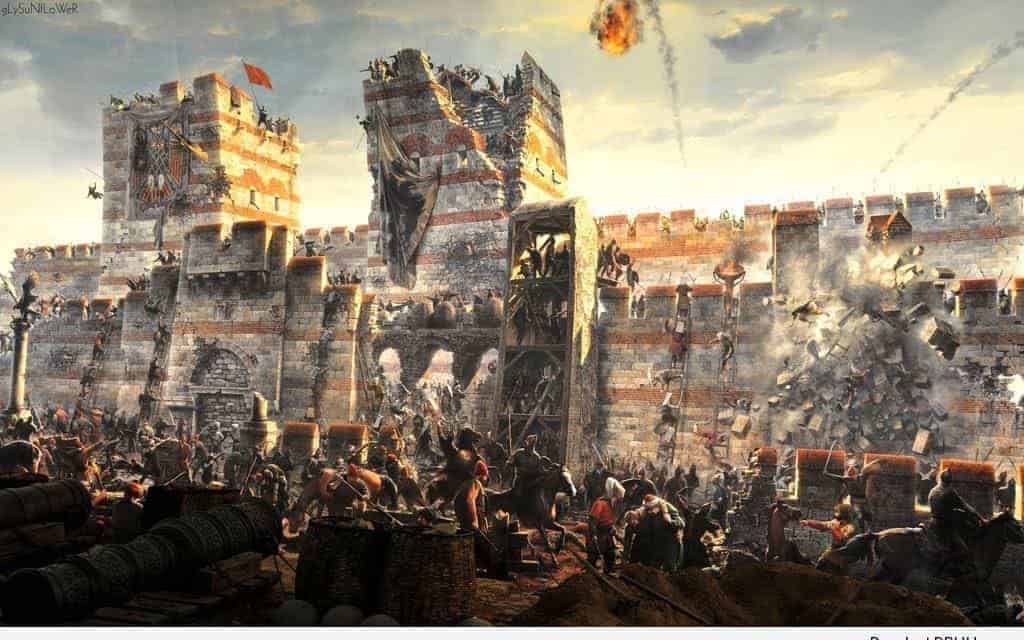In a previous article, I looked at the reasons why Byzantine Empire lasted so long. In this piece, I will analyze the events that led to its ultimate downfall. As was the case with the Western Roman Empire, its Eastern equivalent was faced with an array of foreign enemies. However, it was arguably its internal issues that led to its demise.
Emperors like Justinian I tried to expand the empire but throughout its history, a host of problems arose and contributed to its downfall. No single issue caused the end of the Byzantine Empire. It was made great by its economy, military, unity, and ability to take advantage of the moments of weakness of rivals and neighbors. Over time, its economic and military might waned and along with it, the empire’s capacity to seize an opportunity. Add in civil unrest, natural disasters and powerful enemies such as the Arabs, Seljuk Turks, Bulgars, Normans, Slavs, and Ottoman Turks, and you can see why the Byzantine Empire eventually crumbled.

1 – The Battle of Manzikert (1071)
This is arguably the most decisive battle in Byzantine history and the eyes of many historians; it marked the beginning of the end for the empire. By 1070, the Seljuk Turks had replaced the Arabs as the main Muslim threat. However, they were one of the several enemies the Byzantines had to cope with in the 11th century. The Bulgars and the Normans would have kept the Eastern Roman Empire’s hands full by themselves, but the added threat of the Seljuk Turks was seemingly too much to handle.
The Turks were former nomads who had converted to Islam and began a new era of conquests in the name of their religion. While the Normans were invading Italy, the Turks set their sights on Asia Minor. The Byzantine Emperor, Romanos IV Diogenes, brought an army to stop them and faced the Turks near Manzikert on August 26, 1071. The battle was a complete disaster for the Byzantines as their leader was captured and thousands of men were killed including almost all of the famed Varangian Guard while the Emperor was also captured. They also learned the harsh lesson that mercenaries were unreliable as between 20,000 and 35,000 men deserted.
As well as severely weakening the Byzantine army, victory at Manzikert allowed the Turks to take Anatolia. It was considered the heartland of the empire as it was the home of the majority of its farmers and soldiers. The ‘Theme’ system, which supplied the empire with most of its men, was destroyed, which meant the Byzantines had to look west for aid, with disastrous consequences.
However, Manzikert alone was not responsible for the decline of the Byzantine Empire. During the 12th century, much of Anatolia was recovered under the Komnenian Restoration, but the recovery was brought to a crashing halt at the Battle of Myriokephalon in 1176. The Byzantines were ambushed by the Seljuk Turks and suffered heavy casualties. It was the last effort to recover the interior of Anatolia, and in strategic terms, Myriokephalon was almost as important as Manzikert.

